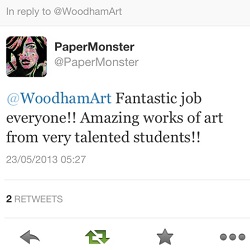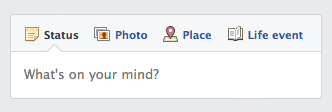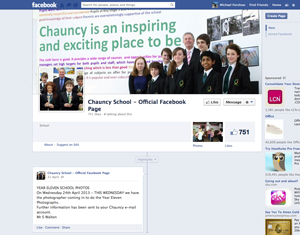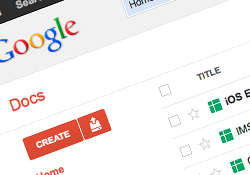Why is social media such a hotly contested topic in schools? There are many ways, as Principal Eric Sheninger explains, in which schools can harness social media and blogging to demonstrate the relevance of learning, and introduce the 'real world' audience to students.

Social Media is bad and has no place in education. It is a distraction to the teaching and learning process. If students are allowed to use social media in school they will stay off task or exhibit inappropriate behavior. Worse, teachers will spend countless hours 'socialising' instead of educating.
This is the misguided stigma that social media carries and, as a result, it is often banned in schools. However, there are a growing number of passionate educators who have embraced social media as a powerful tool for learning. When you look at how reliant the world is when it comes to using social media, these educators look like geniuses.
Photo credit: Jason A. Howie
Teachers can only offer a certain amount of motivation to students, particularly as they are usually the final destination of class and home work. With technology gaining ground in classrooms, however, there is no excuse not to enthuse students with the potential for their work to be shared with the very people that are inspiring their work - authors, artists, scientists, entrepreneurs etc. This is where the benefits of using social media in education really come into play.

After reading 'An Ethic of Excellence' by Ron Berger I was inspired to try and use his core principles to make a difference in my own school.
One of the core principles that struck me from Berger's work was his strong belief that 'to truly engage learners, there needs to be a real audience for their work'. This really rang true for me and took me back to a comment that Julia Skinner made about her fantastic work with the 100 word challenge. During a TeachMeet presentation, Julia asked us all 'how an audience of one person (us, the teacher), can be that motivating'?
If the work always stays on our desk and never goes any further, we are only just scratching the surface in terms of student motivation to do their best. Julia continues to organise a weekly 100 word challenge to engage students in writing, knowing that they'll receive 'real comments' from 'real people' through the power of blogging – hence the increased motivation coming from having a real audience.

In the few decades since the birth of the web we’ve moved from email to social networking to a breadth of online services, storing more and more of our personal information in the so called ‘cloud’.
The level of data out there is growing at an exponential rate. In a typical day last year, people sent more than 144 billion emails, shared more than 684,000 pieces of content on Facebook, and uploaded over 72 hours of video footage onto YouTube every single minute.

When Twitter was first launched back in 2006, many of us were sceptical about whether it would last. What was the point of a tool that only let you send 140-character updates? Why not use Facebook which has a status function plus much more?
Many social journalists never expected it to hit the 5 million mark of users, let alone 500 million. But almost overnight Twitter became an online phenomenon. Today, over 340 million tweets are sent daily from teenagers, worldwide celebrities, small businesses and the largest conglomerates.

Is fear of abuse preventing you from using social media in your school? Are you unsure of what safeguards you can put in place to protect your pupils?
When social media was little more than a tool for socialising, schools could get away with avoiding it. Not any longer. Whether it’s buying a new product, doing business with someone, recruiting a member of staff, or learning a new skill, social media will usually play a part. In fact, social media has become a new form of literacy.
So how do you encourage social media without placing your school at risk?
Here are the steps your school should take before bringing social media into the classroom.

Professional development is cited as one of the main reasons to use Twitter. From questions asked to blog links shared, Twitter provides a ‘real time’ platform for anyone to discover information. Of course, there is the social aspect that dominates the platform, but a Twitter profile, with like-minded followers, allows for reasoned debate and conclusion in your chosen field.
Take the teaching profession. There are numerous educators on Twitter prepared to share experiences and resources. Once a Personal Learning Network has been built up, a teacher can usually find help/answers from one of their ‘colleagues’. Add to this the power of the hashtag and it is easy to see why the Twitter community is growing. Participation in an #edchat discussion with @tomwhitby, or a more specific debate, can lead to reams of information and links coming the way of the willing chat member. This helps to inform a decision or spark interest in a new activity.
So what does this have to do with a job interview?
Photo credit: Johan Larsson

Over the past few weeks I've been privileged to read so many great blog posts by fellow teachers on the numerous benefits of both tweeting and blogging. Having an online presence in order to collaborate and learn from others is now fast becoming one of the most popular and interesting ways to improve your day to day teaching. More and more teachers are getting involved in this online community, which means there are more and more opportunities to network with like-minded people.
My motivation to write this post was not to re-invent the wheel, but instead to bring together the best posts that have been written on this area. It should be seen as a one-stop guide for both teachers looking to dip their toe in the online teaching community, and also the more experienced 'Tweachers' amongst us.

In today’s teaching world, we are all expected to be “digital natives” and to use all the tools available to enhance teaching and learning. We look to use all sorts of devices to help us communicate, to make life simpler, to be more efficient. We don’t use diaries any more but link our calendar of meetings to our phones or to Outlook. We don’t really need to talk to each other because email, Facebook and Twitter obviate the need for oral communication. We are starting to live in worlds that are hermetically sealed, as our work and social activities become increasingly electronic.
There’s nothing startlingly new in the above paragraph; but with all these new technologies come serious implications for safeguarding. Alarmingly, some teachers are blithely unaware of, or choose to ignore, situations that could cause untold damage to their careers.

The use of social media in education continues to be something of a hot topic with arguments both for and against.
So I carried out a small survey of 27 teaching professionals in order to create a baseline of understanding into the use (or not) of social networking in schools, and also any concerns over some of the e-safety risks. The full survey results can be found here.
There are many uses of social media in education – below are just a few of the ways they can be effectively used.

Let’s face it, there is little doubt that tomorrow is going to be electronic, and that's an exciting thought… or at least it should be! For this very reason, many educators are striving to embrace technology. Their students are growing up in an ever-changing technological world and, as educators, we need to keep ahead, be innovative, and integrate technology effectively and securely into the curriculum. Technology helps to motivate our students, keep them engaged, aids communication and creativity, and helps them to develop the skills to work collaboratively. Whilst the less enthusiastic are yet to fully embrace technology, it is time to recognise that technology has become more than registration, planning, e-mailing or other administrative tasks.
Trying to change the mind-set of teachers, parents and governors, who are yet to come on-board, may well be seen as an arduous task but they do need to start thinking differently. The real challenge is that young people think differently and, quite simply, the educational and technological worlds are coming together and accommodating their needs whether we like it or not. Young people need to be equipped with both technological and social skills to take them into the future and ready for the world of work.

A community-driven platform for showcasing the latest innovations and voices in schools
Pioneer House
North Road
Ellesmere Port
CH65 1AD
United Kingdom